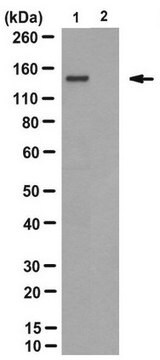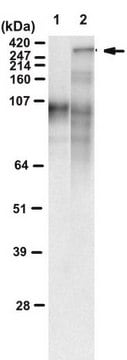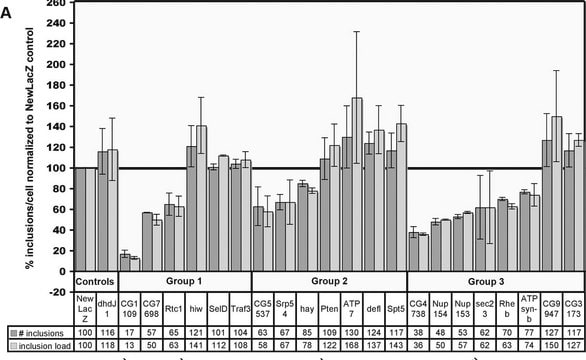MAB5360
Anti-Spinocerebellar Ataxia Type 3 Antibody, clone 1H9
ascites fluid, clone 1H9, Chemicon®
Synonyme(s) :
Ataxin-3, josephin
About This Item
Produits recommandés
Source biologique
mouse
Niveau de qualité
Forme d'anticorps
ascites fluid
Type de produit anticorps
primary antibodies
Clone
1H9, monoclonal
Espèces réactives
rat, human, monkey, mouse
Fabricant/nom de marque
Chemicon®
Technique(s)
ELISA: suitable
immunocytochemistry: suitable
immunohistochemistry: suitable
immunoprecipitation (IP): suitable
western blot: suitable
Isotype
IgG1
Numéro d'accès NCBI
Numéro d'accès UniProt
Conditions d'expédition
dry ice
Modification post-traductionnelle de la cible
unmodified
Informations sur le gène
human ... ATXN3(4287)
Description générale
Spinocerebellar ataxia (SCA) is one of a group of genetic disorders characterized by slowly progressive incoordination of gait and often associated with poor coordination of hands, speech, and eye movements. Frequently, atrophy of the cerebellum occurs. The first ataxia gene was identified in 1993 for a dominantly inherited type called “Spinocerebellar ataxia type 1" (SCA1). Subsequently, as additional dominant genes were found they were called SCA2, SCA3, etc. Usually, the "type" number of "SCA" refers to the order in which the gene was found. At this time, there are at least 29 different gene mutations which have been found.
Spécificité
Immunogène
Application
A 1:500-1:5000 dilution of a previous lot was used in IH.
Immunoprecipitation:
A 1:500-1:5000 dilution of a previous lot was used in IP.
ELISA:
A 1:500-1:5000 dilution of a previous lot was used in ELISA.
Immunocytochemistry:
A 1:500-1:5000 dilution of a previous lot was used in IC.
Optimal working dilutions must be determined by the end user.
Qualité
Western Blot Analysis:
1:500 dilution of this antibody detected SPINOCEREBELLAR ATAXIA 3 on 10 µg of NIH/3T3 lysates.
Description de la cible
Remarque sur l'analyse
Human SCA-3/MJD brain sections, NIH/3T3 lysate
Autres remarques
Informations légales
Not finding the right product?
Try our Outil de sélection de produits.
Code de la classe de stockage
10 - Combustible liquids
Classe de danger pour l'eau (WGK)
nwg
Point d'éclair (°F)
Not applicable
Point d'éclair (°C)
Not applicable
Certificats d'analyse (COA)
Recherchez un Certificats d'analyse (COA) en saisissant le numéro de lot du produit. Les numéros de lot figurent sur l'étiquette du produit après les mots "Lot" ou "Batch".
Déjà en possession de ce produit ?
Retrouvez la documentation relative aux produits que vous avez récemment achetés dans la Bibliothèque de documents.
Notre équipe de scientifiques dispose d'une expérience dans tous les secteurs de la recherche, notamment en sciences de la vie, science des matériaux, synthèse chimique, chromatographie, analyse et dans de nombreux autres domaines..
Contacter notre Service technique








